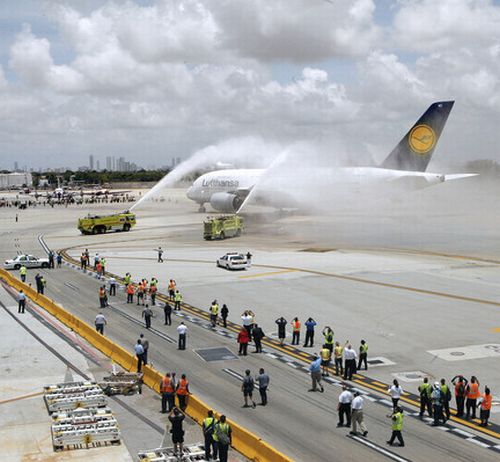13 JUNE 2011
YOUR WORDS
Readers are invited to add their comments to any story. Click on the article to see and add.
BTN DISTRIBUTION
BTN also goes out by email every Sunday night at midnight (UK time). To view this edition click here.
- COMMENT: Michael O’Leary drops his foot in it. Ryanair prices to come down?
- A380 arrives at Miami
- Aer Lingus strike called off
- Air Canada and all that Jazz
- Almaty, Bishkek and Freetown gain capacity increase
- Boeing is big at Paris
- Bombardier wins C series order and Q400 news
- Britain’s Royal Air Force gains in-flight entertainment
- Comair to bring BA franchise to Gatwick
- easyJet with Flexi Fare and Manchester expansion
- Electric cars welcome at Heathrow
- Hellenic Imperial Airways in style to Athens
- Hertz goes for electric bikes in London
- Little and large for Renaissance
- Liverpool opening for Hotel Indigo
- Malaysia Airlines to join oneworld alliance
- oneworld “Express Connections”
- Philip Hammond at the Aviation Club
- Singapore Airlines and Virgin Australia
- SITA finds the lost bags
- Travelodge unveils ‘Metro’ hotels
- ON TOUR: IATA’S AGM at Singapore
- MOTORING UPDATE by Ted Wilkinson
- AND FINALLY: Bull’s-eye
The Business Travel News
PO Box 758
Edgware HA8 4QF
United Kingdom
info@btnews.co.uk
© 2022 Business Travel News Ltd.
A380 arrives at Miami
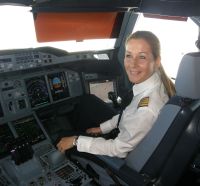 Just 12 months after its introduction into service Miami has become Lufthansa’s latest Airbus A380 destination, the aircraft making its first landing last Friday with a welcome worthy of a Concorde inaugural at its best. Large crowds lined the roads around the airport and traffic stopped on the Freeway parallel to the landing runway. Miami made a great fuss about the aircraft with William D. Talbert III, President and CEO of the Greater Miami Convention and Visitors Bureau, saying the Germany was the city's largest incoming tourist market.
Just 12 months after its introduction into service Miami has become Lufthansa’s latest Airbus A380 destination, the aircraft making its first landing last Friday with a welcome worthy of a Concorde inaugural at its best. Large crowds lined the roads around the airport and traffic stopped on the Freeway parallel to the landing runway. Miami made a great fuss about the aircraft with William D. Talbert III, President and CEO of the Greater Miami Convention and Visitors Bureau, saying the Germany was the city's largest incoming tourist market.
This was Lufthansa’s seventh A380, the eighth due this week and set for Frankfurt – Singapore in September. Another arrives in April 2012 with a decision yet to be made on where it will fly to. The airline has 15 on firm order.
The Lufthansa A380s are configured with the two premier classes, First and Business, on the upper deck. On offer are First Class suites that the airline is standardising on throughout its long haul fleet, and 98 in Business Class arranged 2+2+2. Older readers may recall this was the total capacity of the DC9 and BAC 1-11 that for many years formed the core of European airline fleets. The main deck is Economy throughout, 425 seats 3+4+3. Internal staircases are provided at each end. AERBT will be featuring Lufthansa and the A380 in subsequent editions. www.lufthansa.com
Almaty, Bishkek and Freetown gain capacity increase
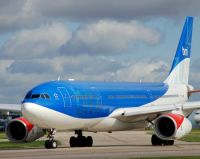 British Midland International (bmi) is to give its Heathrow to Freetown, Almaty/Bishkek flights a major boost with the introduction of an Airbus A330 and a substantially upgraded product from late June. The flights operate on a Monday, Thursday and Saturday.
British Midland International (bmi) is to give its Heathrow to Freetown, Almaty/Bishkek flights a major boost with the introduction of an Airbus A330 and a substantially upgraded product from late June. The flights operate on a Monday, Thursday and Saturday.
The aircraft will offer 36 Business Class and 196 Economy seats and will replace the leased Boeing 757 that has been operating on these services. Readers travelling to Bishkek may note that Kazakhstan charges a £15 visa transit fee, which is payable in both directions.
Business Class clients gain a 60” seat pitch and seat recline of 50°, electronic seat controls, in-seat power, a 15” personal video screen and noise cancelling headphones. Economy passengers will also benefit from 32” seat pitch with a recline of 6° and a personal 15” seat back video screen. www.flybmi.com
Britain’s Royal Air Force gains in-flight entertainment
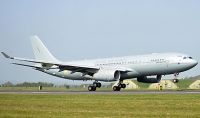 The new fleet of RAF dual passenger/in-flight tanker Airbus A330 aircraft are to be fitted with in-flight entertainment facilities provided by IFE Services of Knutsford, Cheshire (UK). The aircraft can carry up to 291 personnel.
The new fleet of RAF dual passenger/in-flight tanker Airbus A330 aircraft are to be fitted with in-flight entertainment facilities provided by IFE Services of Knutsford, Cheshire (UK). The aircraft can carry up to 291 personnel.
The Future Strategic Tanker Aircraft (FSTA) programme will use 14 specially converted new aircraft supplied by AirTanker Ltd, a consortium that includes EADS, Babcock, Cobham, Rolls-Royce and Thales. The contract also calls for all the associated support including aircraft maintenance, training, infrastructure, fleet management and ground services. The first aircraft is due to be delivered to the RAF at Brize Norton in September.
IFE Services will supply AirTanker with a selection of Hollywood blockbusters, classic movies, TV shows and audio channels. As well as providing all programming content, IFE Services will create a tailored safety film for the converted planes along with branded safety cards with versions available in Braille and large print for the visually impaired. The IFE content will run on the aircraft’s digital Thales i2000 system. www.ifeservices.com
Electric cars welcome at Heathrow
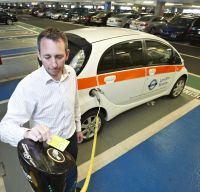 Heathrow has completed the installation of electric vehicle charge points as part of its collaboration with Transport for London (TfL) through the 'Source London' programme.
Heathrow has completed the installation of electric vehicle charge points as part of its collaboration with Transport for London (TfL) through the 'Source London' programme.
Passengers who own electric cars can now charge their vehicles at Heathrow Terminals 1, 3, 4, and 5 short-stay car parks, which have two charging points installed, serving four parking spaces in each car park.
Heathrow is playing a vital role in supporting the Mayor of London's programmes to decarbonise London's vehicle fleet. Each passenger journey made by an electric vehicle will result in zero emissions reducing the impact on climate change and local air quality.
'Source London', recently launched by the Mayor of London, Boris Johnson, has already added 150 new public electric vehicle charging points to the London network, and will deliver 1,300 publicly accessible charge points by 2013. www.sourcelondon.net
Little and large for Renaissance
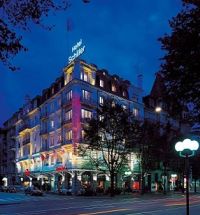 The Hotel Schiller, a historic boutique hotel in Lucerne, has celebrated the completion of its restoration and rebranding as the Renaissance Lucerne Hotel. With just 86 rooms it can truly be classified as a boutique property. Renaissance is the luxury brand of Marriott Hotel Group,
The Hotel Schiller, a historic boutique hotel in Lucerne, has celebrated the completion of its restoration and rebranding as the Renaissance Lucerne Hotel. With just 86 rooms it can truly be classified as a boutique property. Renaissance is the luxury brand of Marriott Hotel Group,
The Renaissance Lucerne Hotel, housed in a century-old City Palais and situated in the heart of Lucerne, is located only a stone’s throw from the shores of Lake Lucerne. It blends modern design with classic sophistication. Guestrooms feature luxurious bedding, rainfall showers, iHome docking stations and flat screen televisions.
At the other end of the scale, and not large by American monster standards, the 212-room Renaissance Istanbul Bosphorus Hotel, due to open in early 2012, has been announced.
Offering stunning views of the Bosphorus, the magnificent towering Renaissance Istanbul Bosphorus Hotel will be located on the European side of Istanbul, midway between the areas of Taksim and Levent. www.marriott.co.uk/renaissance-hotel/travel.mi
oneworld “Express Connections”
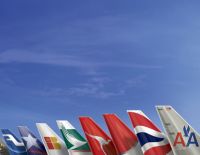 Passengers transferring between flights operated by oneworld member airlines at its key airport hubs will find their connections smoother still from later this month. The “Express Connections” service is designed to make it as easy as possible for passengers connecting between flights operated by the alliance's carriers – particularly at times when schedules are disrupted.
Passengers transferring between flights operated by oneworld member airlines at its key airport hubs will find their connections smoother still from later this month. The “Express Connections” service is designed to make it as easy as possible for passengers connecting between flights operated by the alliance's carriers – particularly at times when schedules are disrupted.
Manned by customer services representatives from all oneworld airlines operating at each airport the aim is to iron any snags in flight connections before passengers are even aware of them.
Working together, the teams monitor flights to identify passengers due to arrive but who have either already missed their connection or are expected to land with less than the normal minimum connection time before their onward flight. Those who have already missed their connection are met at the aircraft gate by staff who have already booked them on the next available flight and printed new boarding passes. Those below the minimum connection time are met at the aircraft and fast-tracked through. “Express Connections" facilities are established at Chicago, Heathrow, Madrid, Miami and New York JFK.
A brand new centre is scheduled to start operating at the end of July at Los Angeles. From late August, Sydney will have the facility. www.oneworld.com
SITA finds the lost bags
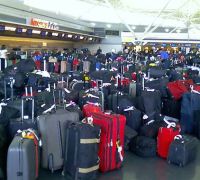 In a move to reduce the delays of mishandled baggage, air transport IT provider SITA has enabled its WorldTracer baggage tracing service to be used by agents with mobile devices at airports. This allows airline staff to proactively assist passengers, filing claims in arrival halls, at baggage carousels and in customs areas, which starts the process of reuniting passengers with their bags as soon as possible. Atlanta and Prague are two airports where the system has been evaluated and is now in service. Passengers waiting for their baggage are reassured that the bag is in the system.
In a move to reduce the delays of mishandled baggage, air transport IT provider SITA has enabled its WorldTracer baggage tracing service to be used by agents with mobile devices at airports. This allows airline staff to proactively assist passengers, filing claims in arrival halls, at baggage carousels and in customs areas, which starts the process of reuniting passengers with their bags as soon as possible. Atlanta and Prague are two airports where the system has been evaluated and is now in service. Passengers waiting for their baggage are reassured that the bag is in the system.
Analysis conducted by SITA indicates that one in eight bags that need to be re-united with a passenger must be sent on a connecting flight as no suitable direct flights are available. To manage this challenge SITA has partnered with airline schedule supplier Innovata.
Though there is a downward trend over the last four years in the rate of mishandled baggage thanks to improved technology and greater vigilance on the part of airports and airlines, there was a slight rise in 2010 due to the major disruptions experienced as a result of the Icelandic ash cloud and severe weather. www.sita.aero
MOTORING UPDATE by Ted Wilkinson
Ford Focus Titanium 1.6 EcoBoost
New Focus Has More Substance
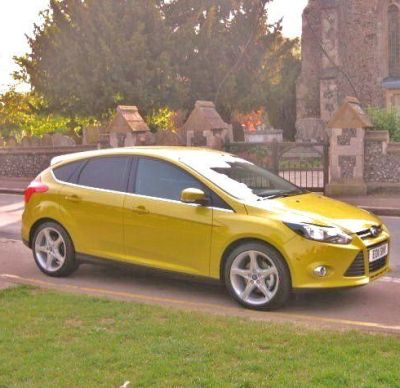 Change a product while it is still a winner. That has clearly been Ford’s business plan for longer than I care to remember. So far the products bearing the blue oval badge have seriously benefited from that policy and the new Focus looks certain to continue the successful trend.
Change a product while it is still a winner. That has clearly been Ford’s business plan for longer than I care to remember. So far the products bearing the blue oval badge have seriously benefited from that policy and the new Focus looks certain to continue the successful trend.
The original Focus was one of my favourite medium sized hatchbacks (and practical compact estates) for numerous reasons, the major ones being the excellent driving qualities, immaculate handling and ride and the practical and comfortable interior.
Many of my Focus drives have been in hire cars and probably the model’s popularity/high usage showed up in the way of interior trim damage suggestive of cheapness.
No longer the case. That came over immediately I sat in the new third generation Focus for the first time, my immediate impression was that Ford has cranked up the overall quality (as they did with the second generation Mondeo) to provide a much more substantial product. I even noted that the driver’s door shut with a good ‘clunk’ factor!
Development throughout the car world has rocketed in the past couple of years and Ford has clearly kept in the environmental race in all respects, particularly when it comes to engine technology. This test car employs a 1.6-litre turbocharged engine to deliver nearly 150 bhp in both a clean and refined manner, proving wrong the long-standing claim that there is no substitute for capacity.
Importantly Ford has retained the essential and sales dominating character of the Focus, prioritising a practical and comfortable cabin for five adults, above average boot capacity and a generous tailgate that, I found, allows very bulky items like furniture and white goods to be swallowed up.
At the front this new Focus feels a little larger than it predecessor, as I expected the driving position is excellent with good supportive seating with plenty of adjustment and notably improved contouring. Add to that a fully adjustable steering column, good pedal position and a modern styled fascia with easy read instrumentation and generally good visibility and it is easy to appreciate why so many drivers feel at home in a Focus.
One point in the visibility though, the front pillars are quite thick and obscure the view when dealing with curves such as the approach to a roundabout, requiring head movement to achieve a satisfactory view. Add to that, the large sweep of the windscreen wipers deposit the ‘wipings’ at the sides of the windscreen and adjacent to those pillars potentially increasing the visibility limit.
Driving the Titanium specification model (only the Titanium X is superior) I have the impression that Ford is after a still wider market sector by appealing to customers who may be trading down in size and overall outlay but refusing any major sacrifices in lifestyle. I don’t think that they will be disappointed and nor will buyers of the lower specification Focus versions as the choice and options are so plentiful.
At the wheel I found the Focus to generate a feeling of a larger car and it is only when driving on country roads or parking did I appreciate the compactness of the car and, in the latter situation, note the self folding exterior mirrors.
A claimed top speed of 130 mph clearly proves the efficiency of the power unit while the claimed acceleration time of 8.6 seconds to 62 mph (100 kph) from rest shows just how lively this car is though the gears…and there are six of them all easily selectable.
As to economy, a combined figure of 47.1 mpg on this model equipped with the optional Stop+Start facility, is well into diesel territory.
As they say, it is not what you can do, it is how you do it, and this Focus is, as I expected, a delight for all drivers. It is hard to push it because the running gear, including the all disc braking system, is so well honed it makes easy work with clearly defined safety margins. Conversely the free revving, quiet yet flexible nature of the power unit makes for an easy driving life for those general local trips.
Of course, at the trim level there are a lot of creature comforts, technological bits like Bluetooth voice control system, tyre deflation detection system, heated windscreen, speed limiter cruise control, hill start control and automatic operation of head lights/windscreen wipers/rear view mirror dipping. You also get a space saver spare wheel.
Options on the test car were a £750 Driver Assistance Pack including Stop+Start, Lane Departure Warning, Lane Keeping Aid, Traffic Sign Recognition, auto high beam and Blind Spot Monitoring System and a £525 Convenience Pack featuring Active Park assist and powerfold mirrors.
In essence there is a large quantity of the original Focus DNA but there is no denying this Focus has been strongly promoted in status. I strongly approve.
* Rivals include Vauxhall Astra, VW Golf, Citroen C3, Fiat Bravo, Peugeot 308, Kia Ceed, Audi A3, Honda Civic, Skoda Fabia.
STAR RATINGS (out of 10)
Performance 9
Handling 9
Transmission 9
Noise 9
Economy 9
Ride and Comfort 9
Accommodation 9
Styling 9
Brakes 9
Finish 9
TOTAL: 90 %
Prices from £19,745 OTR
NOTES FROM TED WILKINSON’S MOTORING DIARY
BCA: British Car Auctions report that prices for convertible cars have remained cool despite the abundant hot weather. For under £5,000 buys have snapped up Mazda MX5, Ford StreetKa, BMW Z3, Alfa Romeo Spider, MINI cooper and Volvo C70. Under £10,000 has seen sales of Porsche Boxsters, Audi TTs and VW Beetles. www.british-car-auctions.co.uk
CITROEN: Hard on the heels of Top Gear’s 2011 Car of the Year award for the Citroen DS3 comes a similar accolade from Diesel Car Magazine plus the Best Small Car award. www.citroen.co.uk
FORD: Ford and the Ohio State University have announced a project to use the white sap from the dandelion root to produce a sustainable rubber substance that could be used in the manufacture of cup holders, floor mats and trim material. Soy foam is already used in the car seats. www.ford.co.uk
SEAT: The new SEAT Alhambra MPV 7-seat model has recently been voted Best MPV of the year by Diesel Car and Fleet World Magazines. The Alhambra has already clinched the Car Buyer UK and What Car? Titles for the MPV of the Year. www.seat.co.uk
SKODA: A new SE Plus specification has been introduced across the entire Skoda range. Fitting in between the SE and Elegance specifications, it offers equipment upgrades savings worth between £600 and £1,200. www.skoda.co.uk
VOLKSWAGEN: To celebrate the 35th anniversary of the VW Golf GTi, a special ‘35’ model featuring a hotter engine, body cosmetics and special lightweight alloy wheels will be introduced later this year. Price to be announced when order books open. Also announced is the Argentinean made Amarok pick-up, a five-seat double cab plus a generous sized pick-up space. Powered by a choice of two 2.0-litre turbo diesel and using VW’s proven 4Motion 4x4 transmission, it will sell from £16,995 plus VAT and OTR costs. Marketing will be through most VW commercial dealerships. www.volkswagen.co.uk
VOLVO: Testing is under way on a Volvo V60 plug-in hybrid model. Powered by a 215 bhp diesel engine driving the front wheels and a 70 bhp electric motor driving the rear wheels, the car is claimed to have a potential consumption of 150 mpg and a range of 760 miles. www.volvo.co.uk
COMMENT: Michael O’Leary drops his foot in it. Ryanair prices to come down?
There can be no doubt that since becoming CEO of a small and somewhat moribund Ryanair in 1994 Michael O’Leary has rejuvenated the short inter-Europe airline sector. Much of what he has achieved is to his credit. Certainly the market needed shaking up but perhaps it was a decade earlier that some bright soul really put his finger on it when the name Airbus was chosen for the new aircraft manufacturing consortium.
Air bus is exactly what Ryanair offers. There is no romance in the style of aviation that O’Leary personifies. The fact that his numbers continue to grow seems to indicate that people follow the crowd. The title “The world’s most annoying airline” is well justified.
The man has been incredibly lucky. He was there when the old European aviation route licence rules came down. He was there when Boeing was desperate to sell aircraft. He was there when the internet came in together with the rise of the credit card. And he was only too happy to help out airports in the back of beyond desperate to attract business. He is effectively a UK airline, with his largest base at Stansted, but is behoven to the Irish CAA, which does not have the same resources as its British counterpart. He can attack Westminster in his advertisements. One cannot see British Airways or its Chief Executive doing the same in the Dublin media.
But Mr O’Leary is both Jekyll and Hyde or, as someone put it the other day, has the double standards of Sepp Blatter. When it comes to the media Michael speaks the truth, the half truth, and nothing like the truth. Sadly most of the press are gullible. His blaspheming is notorious, which does his credit no good at all. It achieves nothing and actually shows up in a bad light one side of his character. He is sadly seen by part of the Irish establishment as the man of the moment, money being the king. Others in the Emerald Isle think the opposite and he is loathed.
With its sometimes lack of judgment Ryanair has within the last week praised the UK CAA ruling that Gatwick Airport has applied discriminatory charges for check-in facilities. Under what is now an agreed unfair regime, all travellers are charged for check-in facilities, even though Ryanair’s passengers have to check-in online and the majority (the airline's statistics) travel with hand luggage only.
Ryanair travellers have therefore been subsidising the check-in costs of other carriers. It would seem that by April 2012 these charges must come off the monies paid by Ryanair.
But will Ryanair reduce prices to clients too?
Based on past performances passengers will not benefit by one penny, or even 100th part of a Euro. Ryanair will pocket the reduction and use some subterfuge in order to ensure that any savings are not passed on. This is the airline that refuses to return APD to customers who do not travel on the spurious grounds that the transaction would cost too much. The airline makes millions from this manoeuvre. This is the airline who charge every passenger one pound to assist wheelchair clients, another money-spinner.
AERBT tried booking Luton to Dublin in one week’s time. We went for the cheapest flight available, asked for priority booking (which does work at Luton) and added a (small) 15k bag.
The £20.99 fare became £81.82.
We still do not know what the taxes and fees cover and, since we never pressed ‘buy’, what the debit and credit charges are. These do not seem to be shown on the site.
20.99 Adult
26.83 Taxes and fees
2.00 EU 261 Levy
6.00 Web check-in
20.00 Bag
5.00 Priority boarding
1.00 Ticket confirmation Charge
£81.82 TOTAL
Transparency is the buzz word. See also our On Tour report on IATA. Passengers don’t mind paying a reasonable fare (and at the end of the day Ryanair’s fares are for the most part reasonable). But they want to see what they are actually paying straight away. They can then choose if they want to be flown to the middle of somewhere, or the middle of nowhere and in what style. Ryanair must toe the line or be seriously fined.
Malcolm Ginsberg
Editor in Chief
Aer Lingus strike called off
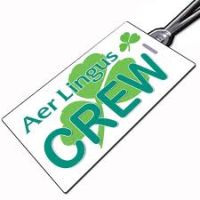 Last minute negotiations did result in the Aer Lingus strike, due last week, being called off.
Last minute negotiations did result in the Aer Lingus strike, due last week, being called off.
In many ways the damage had been done. Up to 30,000 passengers fly with Aer Lingus every day, but the airline said just 3,500 had cancelled or rescheduled their flights for later in the week. However, the threat of potential industrial action is likely to make passengers nervous about booking with the airline until the matter has been fully resolved.
Both sides agreed proposals to tackle the pay and conditions issues raised by the Irish pilots' union and a vote will take place. The dispute arose over rotas and differences in rates of pay between pilots working in Belfast and those in Dublin, Cork and Gatwick.
A deadline of 1 July has been set for resolving any outstanding issues and to allow for the implementation of roster changes already agreed. The pilots' union IALPA pointed out that the action has only been "suspended". www.aerlingus.com
Boeing is big at Paris
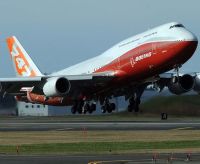 With 787 Dreamliner, 747-8 Intercontinental and Freighter, plus Qatar Airways 777-200LR and Air Berlin’s 737-700 innovative Sky Interior, Boeing will have its largest ever commercial aircraft presence at the Paris Air Show (20 to 26 June).
With 787 Dreamliner, 747-8 Intercontinental and Freighter, plus Qatar Airways 777-200LR and Air Berlin’s 737-700 innovative Sky Interior, Boeing will have its largest ever commercial aircraft presence at the Paris Air Show (20 to 26 June).
However, visitors please be aware that this summary hides the fact that the 787 does not arrive until after lunch on the Tuesday, and is very much a working prototype with an interior full of test equipment. It will replace the 747-8 Intercontinental passenger aircraft, also on a test programme and likewise not fitted out. Both the 747-8 Freighter and the 787 are currently planned to depart on the evening of 22 June.
Boeing will deliver the lead 747-8 freighter to Cargolux later this summer. The initial 747-8 Intercontinental will be handed over in the fourth quarter to a VIP customer, and Lufthansa will be the first airline to receive an Intercontinental in early 2012.
The 787 flight-test aeroplane ZA001 featuring the full Dreamliner livery will be on static display 22-23 June. Launch customer ANA will receive its first 787 in August or September. www.boeing.com/commercial
Comair to bring BA franchise to Gatwick
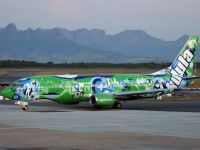 Comair has formally announced its intention to fly direct services between Durban and Gatwick. Whilst start dates have yet to be released, the airline has indicated that the flights will operate three times per week. Another decision has also to be made as to whether the flights will be operated under the BA franchise Comair branding or under their low cost brand kulula. The airline operates 14 Boeing 737 Classics but a long haul wide-bodied aircraft will be needed for the services, probably initially wet leased (third party aircraft and crew).
Comair has formally announced its intention to fly direct services between Durban and Gatwick. Whilst start dates have yet to be released, the airline has indicated that the flights will operate three times per week. Another decision has also to be made as to whether the flights will be operated under the BA franchise Comair branding or under their low cost brand kulula. The airline operates 14 Boeing 737 Classics but a long haul wide-bodied aircraft will be needed for the services, probably initially wet leased (third party aircraft and crew).
Currently the only way to Durban from outside southern Africa is via frequent services through Johannesburg or the Emirates direct daily from Dubai. The new flights will save at least three hours including 80 minutes on the Durban – Johannesburg shuttle.
Comair dates back to 1946 and is the second longest operating airline in South Africa after the national airline. In 1996 it struck a franchise agreement with British Airways now extended until 2018. Its route network includes domestic destinations and most of the capitals in the region. www.comair.co.za
Hellenic Imperial Airways in style to Athens
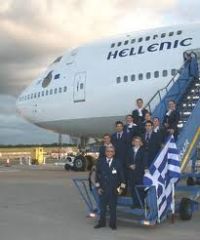 Greek carrier Hellenic Imperial Airways will introduce services between Athens and Gatwick from 1 July this year with onward connections to Kuwait and Dubai. These will initially operate three times weekly using an Airbus A340 aircraft offering both a full service Business Class and Economy Class cabin. Further flights will be added over the next three months to give a six days per week service.
Greek carrier Hellenic Imperial Airways will introduce services between Athens and Gatwick from 1 July this year with onward connections to Kuwait and Dubai. These will initially operate three times weekly using an Airbus A340 aircraft offering both a full service Business Class and Economy Class cabin. Further flights will be added over the next three months to give a six days per week service.
The real bonus for customers flying between Athens and London is the Airbus A340 which is also used for the airline's New York service. It offers all the comforts of long haul travel with personal in-flight entertainment at all seats and spacious recliner seats in Business Class.
Hellenic Imperial Airways was incorporated in May 2006 and to date has only operated charter flights.
It has now initiated plans to expand its operations and fleet, and, as it says “re-connect Greece to the world” creating a large network of scheduled flights around the globe. In its first phase of its expansion to begin this month, Hellenic Imperial will offer non-stop flights to New York, Dubai, Kuwait and London with further destinations to follow. www.hellenicairways.com
Liverpool opening for Hotel Indigo
 Hotel Indigo Liverpool, a 151-bedroom boutique hotel on Chapel Street minutes from the World Heritage Site, has opened. It features a Marco Pierre White Steakhouse Bar & Grill, his third North West venue and will also offer an exclusive non-residents’ lounge providing a regionally inspired menu with an al fresco dining area.
Hotel Indigo Liverpool, a 151-bedroom boutique hotel on Chapel Street minutes from the World Heritage Site, has opened. It features a Marco Pierre White Steakhouse Bar & Grill, his third North West venue and will also offer an exclusive non-residents’ lounge providing a regionally inspired menu with an al fresco dining area.
The Liverpool property follows the 95-room Hotel Indigo Glasgow and properties in London at Paddington and Tower Hill. In 2012 Hotel Indigos open in Edinburgh, Birmingham and Newcastle.
The design very much reflects the local area. Hotel Indigo Liverpool, owned and operated by Sanguine Hospitality Ltd, will reflect the city’s cotton trade history and include themed decoration in its rooms and artwork depicting its location including St Nicholas Church, Edmund Street, the Cotton Exchange and the Liver Birds.
Hotel Indigo is the boutique hotel brand from InterContinental Hotels Group. The 4-star venues offers a selection of double and twin rooms, all of which offer free wi-fi. Further facilities include a residents’ gym and, in each room, rainfall showers, media hub and LCD TV, complimentary selection of mini-bar items, laptop safe, ironing facilities and luxurious Aveda bathroom toiletries. www.hotelindigoliverpool.com
Philip Hammond at the Aviation Club
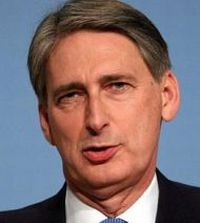 UK Minister for Transport Philip Hammond was Guest of Honour at the Aviation Club last Thursday and put on a typically quality Westminster presentation fully aware that with some guests he was not the most popular Cabinet member.
UK Minister for Transport Philip Hammond was Guest of Honour at the Aviation Club last Thursday and put on a typically quality Westminster presentation fully aware that with some guests he was not the most popular Cabinet member.
In a speech which there were plenty of mentions of enquiries but nothing of substance. The Times noted that the Government's political decision to stop Heathrow’s third runway was “witless”. Mr Hammond more or less said that he did not want the job and would have preferred being Chief Secretary to the Treasury, a dig at the Liberal Democrats.
Asked by AERBT that the quietly cancelled Airtrack Waterloo/Staines to Heathrow project be resurrected he pointed out that it was the BAA and not the Department for Transport that had binned it. AERBT noted that the level crossing problems en route should be dealt with as a matter of safety and not just Heathrow and that the rail link would also reduce road traffic. Minister Hammond referred to his Department's examination of train links into the airport. The impression was that Airtrack could be back for examination. But how quickly? http://www.dft.gov.uk/news/speeches/hammond-20110609
Travelodge unveils ‘Metro’ hotels
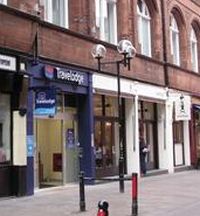 ‘Metro’ hotels is the latest thinking from Travelodge, said to be the UK’s fastest growing hotel company. The Dubai-owned company announced plans to develop ‘Metro’ (small) style hotels, in prestigious locations and in office blocks across the UK, in a bid to meet the growing demands of its customers. These properties will be between 20 to 40 rooms in size.
‘Metro’ hotels is the latest thinking from Travelodge, said to be the UK’s fastest growing hotel company. The Dubai-owned company announced plans to develop ‘Metro’ (small) style hotels, in prestigious locations and in office blocks across the UK, in a bid to meet the growing demands of its customers. These properties will be between 20 to 40 rooms in size.
The ‘Metro’ hotel model will allow the hotel chain to open properties near to existing popular Travelodges in locations where larger development sites are not available. Properties that will be considered under this new scheme include: floors in office buildings, business parks, pubs, old cinemas/theatres, snooker halls, listed buildings, retail outlets and derelict buildings.
The desire to build smaller Travelodge hotels has been inspired by two successful development ventures the company invested in during 2010. The first initiative was opening a ‘Metro’ style 43-room prototype hotel in one of Edinburgh’s busiest tourist areas in a Georgian listed building which also houses two bars and a restaurant. The second venture to support the ‘Metro’ style Travelodge concept is the successful conversion of 52 Innkeeper’s Lodges into the Travelodge estate following their purchase from Mitchells & Butlers in July 2010. The majority of properties are under 40 rooms. www.travelodge.co.uk
AND FINALLY: Bull’s-eye
This is not an aviation joke but since it was supplied by our friends at IFALPA (International Federation of Airline Pilot Associations) it does count. And we think it funny.
One of the best marksmen in the FBI was passing through a small town. Everywhere he saw evidence of the most amazing shooting. On trees, on walls, and on fences there were numerous bull's-eyes with the bullet hole in dead centre.
The FBI man asked one of the townsmen if he could meet the person responsible for this wonderful marksmanship. The man turned out to be the village idiot.
"This is the best marksmanship I have ever seen," said the FBI man. "How in the world do you do it?"
"Nothing to it," was the reply. "I shoot first and draw the circles afterward."
Air Canada and all that Jazz
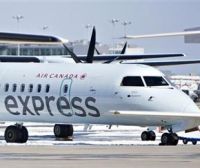 Jazz as an airline may have come in with a bang but it is going out with a fizzle.
Jazz as an airline may have come in with a bang but it is going out with a fizzle.
From the beginning of this month all services operated for Air Canada by Jazz Aviation LP have begun flying under the name Air Canada Express. Air Canada says that this is part of an ongoing rebranding of all the airline’s regional services. From a marketing point of view it makes sense, and for the traveller there is no misunderstanding who is the operator.
The first Jazz Aviation aircraft to feature the Air Canada Express livery is a new Bombardier Q400 NextGen aircraft that will begin service this month, with the remainder of the Jazz fleet flying for Air Canada Express to adopt the new livery as additional aircraft are delivered or existing aircraft repainted under their regular paint schedule.
Already Air Canada flights operated by Sky Regional Airlines between Montreal and Toronto City Airport fly under the Air Canada Express name with the new livery on its fleet of five Q400 aircraft. Three other regional airlines that fly on Air Canada's behalf – Air Georgian, Central Mountain Air, and EVAS – will begin to use the Air Canada Express name and livery in the near future. www.aircanada.com
Bombardier wins C series order and Q400 news
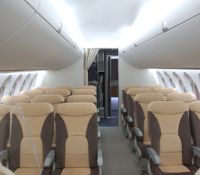 Braathens of Sweden has become the fourth customer for Bombardier’s slow selling all new C Series regional jet. Its firm order is for five smaller CS100 aircraft and five larger CS300 mainline jets. The 110- to 145-seat aeroplane is set to enter the market in late 2013 and compete with Boeing 737 and Airbus A320 aircraft.
Braathens of Sweden has become the fourth customer for Bombardier’s slow selling all new C Series regional jet. Its firm order is for five smaller CS100 aircraft and five larger CS300 mainline jets. The 110- to 145-seat aeroplane is set to enter the market in late 2013 and compete with Boeing 737 and Airbus A320 aircraft.
Pre-Paris Air Show the order book stands at 30 for Lufthansa, 20 with Lease Corporation International, 40 Republic Airways and the 10 for Braathens which are expected to go to its Malmo Aviation subsidiary. The C series aircraft is designed to be operational out of London City Airport and is said to be able to make New York non-stop with a reasonable payload.
At a briefing during EBACE, Bombardier Commercial Aircraft President Gary Scott confirmed that in the company’s opinion there was room for a 90-seat stretched version of the Q400, but not until 2015. www.bombardier.com
easyJet with Flexi Fare and Manchester expansion
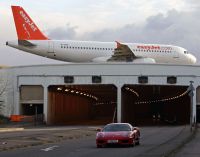 Budget airline easyJet, now aiming towards the business travel market, has confirmed that its new Flexi fare is available on the airline's website. This gives passengers unlimited flexibility to change the date of their flights up to two hours before the scheduled departure time. Passengers booking an easyJet Flexi fare will also benefit from automatic speedy boarding, no booking fees and a checked in hold bag included at no extra cost. They can make unlimited date changes within a four-week time window – one week before and up to three weeks after the original booked travel date.
Budget airline easyJet, now aiming towards the business travel market, has confirmed that its new Flexi fare is available on the airline's website. This gives passengers unlimited flexibility to change the date of their flights up to two hours before the scheduled departure time. Passengers booking an easyJet Flexi fare will also benefit from automatic speedy boarding, no booking fees and a checked in hold bag included at no extra cost. They can make unlimited date changes within a four-week time window – one week before and up to three weeks after the original booked travel date.
In another move, and following agreement with Manchester Airport Group, the airline has committed a sixth Airbus for this year with a seventh due to arrive in time for the 2012 summer season.
easyJet launched at Manchester Airport in March 2008 following the acquisition of GB Airways, and with it five routes. Currently the airline moves approximately one million passengers through the base each year and has 26 destinations. It says the success of the operation is put down to the airport’s central location, strong business links and wide catchment area. www.easyjet.com
Hertz goes for electric bikes in London
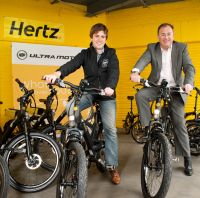 Electric bikes are now on offer from Hertz in London. The world’s largest car rental brand is very much into an eco-mobility programme which the electric two wheelers fit very nicely. Supplied by Ultra Motors every customer receives full training, a lock, optional helmet and a copy of the AA Leisure Guide to London with suggested bike rides around the capital.
Electric bikes are now on offer from Hertz in London. The world’s largest car rental brand is very much into an eco-mobility programme which the electric two wheelers fit very nicely. Supplied by Ultra Motors every customer receives full training, a lock, optional helmet and a copy of the AA Leisure Guide to London with suggested bike rides around the capital.
Visitors and residents alike have a choice of the Fast4ward Edge (folding) and A2B Hybrid 24 models, at up to speeds of 15.5mph. Twelve bikes are available for daily rental from Hertz’s Marble Arch location, for £20 per day.
The Ultra Motor electric bicycles can be easily parked and locked to bike racks so customers can use them as a mode of transport to reach London landmarks, or to explore London parks in a fun and unique way. The bikes are also perfect for people who are put off cycling up big hills or facing strong headwinds, or want a change from pedal bikes. If the bike needs to be recharged it can simply be plugged into any mains socket. www.hertz.co.uk/electricbikes
Malaysia Airlines to join oneworld alliance
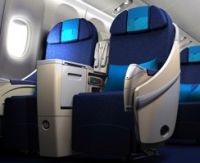 The oneworld airline alliance is to gain a substantial foothold in South East Asia with the proposed addition Malaysia Airlines. The arrangement is expected to be consummated by the end of next year.
The oneworld airline alliance is to gain a substantial foothold in South East Asia with the proposed addition Malaysia Airlines. The arrangement is expected to be consummated by the end of next year.
As it prepares for its alliance membership, Malaysia Airlines intends to develop bilateral links with a number of oneworld's established partners and already code-shares with members Cathay Pacific and Royal Jordanian.
Three established oneworld member airlines currently serve Malaysia, with Cathay Pacific, Japan Airlines and Royal Jordanian flying to Kuala Lumpur, and Cathay Pacific also to Penang and, through its Dragonair affiliate, Kota Kinabalu. Opportunities for expanding the alliance's coverage of the country will be explored as Malaysia Airlines prepares to join.
Qantas will serve as sponsor of Malaysia Airlines' entry into oneworld. www.malaysiaairlines.com
Singapore Airlines and Virgin Australia
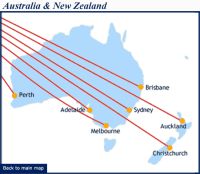 Whilst Singapore Airlines (SIA) is now publically saying that its 49% stake in Virgin Atlantic is up for sale it is also establishing what it calls “a landmark agreement” with the recently rebranded Virgin Australia Group.
Whilst Singapore Airlines (SIA) is now publically saying that its 49% stake in Virgin Atlantic is up for sale it is also establishing what it calls “a landmark agreement” with the recently rebranded Virgin Australia Group.
Sir Richard Branson was prominent when Virgin Blue, Pacific Blue and V Australia combined to create Virgin Australia in May of this year. Virgin Atlantic is thought to own 25% of what is Virgin Blue Holdings Ltd, which has a 14.99% ownership by Air New Zealand (ANZ), itself once owned by Singapore Airlines. Both ANZ and SIA are members of Star Alliance.
Under the agreement, the two airlines propose to codeshare on each other’s international and domestic flights; offer reciprocal frequent flyer programme benefits and lounge access; co-ordinate schedules between Singapore and Australia and beyond to provide seamless connections; and engage in joint sales, marketing and distribution activities.
In another strategic move SIA has confirmed that it is well on the way to creating a long haul low cost airline. www.singaporeair.com www.virginaustralia.com
ON TOUR: IATA’S AGM at Singapore
It was supposed to be just a normal IATA (International Air Transport Association) conference, if they are ever normal, but the 67th gathering of most of the world’s airlines (some of the larger low fare carriers don’t participate) has proved to be eventful.
In fact virtually every year something happens to remind the chief executives how running an airline can be a very volatile business. In 2010 it was the German Government’s imposition of an airport tax, announced in the middle of IATA hosted by Berlin. This year two major stories emerged – Qatar Airways boss Akbar Al Baker claiming IATA was out of control and EU climate chief Connie Hedegaard talking about the “rights” of her organisation regarding legislation it sought to impose.
Tony Tyler, former Chief Executive of Cathay Pacific, was confirmed to succeed Giovanni Bisignani as IATA’s Director General and CEO. Tyler’s appointment is effective from 1 July 2011, at which point Bisignani will become Director General Emeritus. The handover speeches were in perfect harmony.
For 2011 the event was supposed to be in Cairo. For reasons that are obvious, in March the venue was changed.
Al Baker startled the hall with a blast that really set delegates talking amongst themselves. The gentlemanly, but sometimes volatile, Mr Al Baker launched a scathing attack over the lack of transparency by IATA and its finances. Readers will be acutely aware that this outburst comes only weeks after another self-appointed international body has been accused of the same offence, with Qatar the main target. As one delegate pointed out the country has only an ethnic population of less than half a million (plus one million expats from various countries). Birmingham (UK) has twice as many locals and in that city most people are allowed to vote.
In a dramatic session the Qatar Airways boss led a vocal onslaught by a number of international airlines over IATA’s failure to show clear transparency in its processes saying that IATA appeared to be “run for the few, by the few” and lacking full transparency.
He queried the auditing process for IATA’s 2010 financial statement, and later questioned the “surprise” nomination of Etihad Chief Executive Officer James Hogan to fill the extra seat created to broaden the representation of carriers from the Middle East on IATA’s board. No room for the Qatar Airways CEO.
Al Baker highlighted some of IATA’s expenditure, including US$18m on travel, US$58m on data processing and IT and US$29m on outsourcing and consultancy. He called on IATA to justify “such large sums spent on travel” and the processes by which consultant and outsourcing contracts were awarded. Emirates boss Tim Clark seemed to support the Al Baker outburst.
Al Baker supported a motion for IATA to reconsider the appointment of its auditors, having been unconvinced about the industry body’s financial accounts and auditing process.
Regarding the nomination of Hogan, Al Baker told the AGM: “We believe such issues should not be surprises. Firstly, such decisions should be transparent and secondly, if geographical representation is the basis of the composition of the board, the regional airlines involved should be informed in advance of their regional allotments so that they can co-ordinate who should represent them.”
Emirates called for greater dialogue to ensure IATA was more transparent while International Airlines Group, the holding company of British Airways, sought clarity on the entire voting process of board members.
Speaking to journalists at Singapore, International Airline Group CEO Willie Walsh said that the BA/Iberia company has no plans to acquire additional airlines in the near future. Commenting on rumours that IAG may invest in Air Berlin, he said: “We are very focused on the synergies [from BA and IB].” Walsh said he believes that high oil prices will encourage more airlines to consolidate more quickly. But he cautioned that it may not be the right time to invest in carriers. “I would never be interested in [buying] airlines [that are having difficulty operating] with fuel prices around the US$100 per barrel mark,” he said.
Whilst the internal politics of IATA will not concern the travelling public, the effect of the 2012 European Union (EU) emissions trading scheme will add to the cost of flying. IATA supports the project but says it is unfair and costly.
From 1 January next year, airlines landing in the EU's 27 member states will have to join the bloc's US$120bn scheme, which obliges carriers to pay for each tonne of carbon dioxide pollution above a fixed cap.
The cost is calculated from the point of departure, meaning long haul carriers will be hit hardest, regardless whether the airline is from an EU country or not.
While the majority of non-EU airlines have complied and said they will join the emissions trading system (ETS), they have done so in protest, with China and US carriers taking the hardest line.
"IATA's position is very clear. We see emissions trading as a useful tool and we've not backed away from that at all," said Paul Steele, IATA’s Director, Aviation Environment.
On Monday, the EU climate chief Connie Hedegaard said that the bloc had the right to impose legislation to cut emissions from aviation and showing weakness would encourage further challenges to EU policies.
In a letter to Airbus and European airlines, she also gave a subtle reminder that the EU only chose to include aviation in its carbon-trading scheme after IATA had given its support to carbon markets as the best tool for the job.
She noted that in a 2004 submission to the United Nations, IATA had argued for the principle of emissions trading.
Steele said IATA's position was unchanged and that a global trading solution was preferred.
"The issue about the EU ETS is not about the ETS as a mechanism, it's about the fact that the EU has probably over extended itself in the way it's trying to impose it," he told reporters.
Analysts say airlines' entry into the scheme could cost them €1bn
China Air Transport Association (CATA) says the scheme will cost Chinese airlines CNY800m (US$123m) in the first year and more than triple that by 2020.
The European Commission, which administers the ETS, says governments can apply for an exemption if they take what are called equivalent measures to curb aviation emissions but hasn't spelled out what measures would be acceptable.
"Our concern from an industry point of view is there doesn't seem to be any accountability mechanism to sign off on what an equivalent measure is, apart from what the Commission decides it is," Steele said.
Nor was there clarity on how to verify and monitor such steps by a third country, he said.
"It's one of the biggest concerns we have right now, that we'll end up with an even greater patch-work of measures."
On the Tuesday of the gathering an optimistic note was sounded by Brian Pearce IATA’s Chief Economist. He said that business travel demand is holding up better than price-sensitive leisure travel in a sign of business confidence and a recovery in world trade. Airlines also expect renewed growth in air cargo demand in the second half of this year as movements of capital goods and high-value components pick up.
Pearce noted Chinese domestic traffic, which is often regarded as a barometer of the domestic stimulus in the world's second-largest economy, had dipped temporarily as authorities moved to head off inflation but should return to a path of structural growth. He warned that record deliveries of around 1,300 to 1,400 jet and turboprop aircraft in 2011 created a "clear risk of overcapacity" in some markets, but noted that the aviation industry outlook in Asia, excluding Japan, remained positive.
For many people the most interesting stand in the accompanying small exhibition was IATA’s Checkpoint of the Future.
“We spend US$7.4bn a year to keep aviation secure. But our passengers only see hassle. Passengers should be able to get from curb to boarding gate with dignity. That means without stopping, stripping or unpacking, and certainly not groping. That is the mission for the Checkpoint of the Future. We must make co-ordinated investments for civilized flying,” said Giovanni Bisignani introducing the project.
“Today’s checkpoint was designed four decades ago to stop hijackers carrying metal weapons. Since then, we have grafted on more complex procedures to meet emerging threats. We are more secure, but it is time to rethink everything. We need a process that responds to today’s threat. It must amalgamate intelligence based on passenger information and new technology. That means moving from a system that looks for bad objects, to one that can find bad people,” said Bisignani.
How does it work?
The Checkpoint of the Future ends the one-size-fits-all concept for security. Passengers approaching the checkpoint will be directed to one of three lanes: ‘known traveller’, ‘normal’, and ‘enhanced security’. The determination will be based on a biometric identifier in the passport or other travel document that triggers the results of a risk assessment conducted by government before the passenger arrives at the airport.
The three security lanes will have technology to check passengers according to risk. “Known travellers” who have registered and completed background checks with government authorities will have expedited access. “Normal screening” would be for the majority of travellers. And those passengers for whom less information is available, who are randomly selected or who are deemed to be an “Elevated risk” would have an additional level of screening.
Screening technology is being developed that will allow passengers to walk through the checkpoint without having to remove clothes, take off their shoes or unpack their belongings. Moreover, it is envisioned that the security process could be combined with outbound customs and immigration procedures, further streamlining the passenger experience.
Through the UN’s International Civil Aviation Organization (ICAO), 19 governments, including the United States, are working to define standards for a Checkpoint of the Future. IATA is also co-ordinating closely with the US Department of Homeland Security’s Checkpoint of Tomorrow programme which has similar goals.
“We have the ability to move to the biometric scanning and three-lane concept right now. And while some of the technology still needs to be developed, even by just re-purposing what we have today, we could see major changes in two or three years time,” said Bisignani.
The next requirement will be for larger security areas. Airport design is always on the move. www.iata.org



